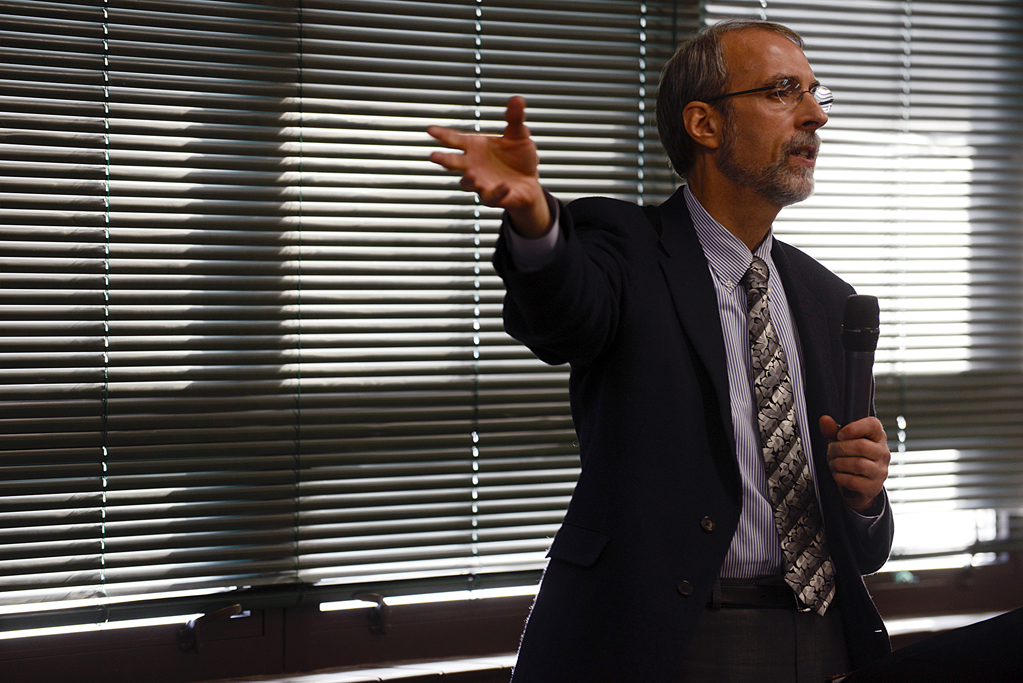On the last day of 2012, the oil-drilling rig Kulluk ran aground on Sitkalidak Island near Kodiak. The weather was foul, the location remote, and the timing unfortunate.
But responders had a new tool that let them scope out the weather, sea bottom, navigation threats, endangered environmental resources, potential sheltered anchorages, and access options — before even leaving their desks.
A presidential appointee to the Federal Office for Alaska Gas Line Projects will join the Kenai Peninsula Borough Mayor’s Office as an oil and gas adviser.
Larry Persily, is set to join borough staff March 13, when he travels to Anchorage to attend the next meeting of a municipal gas advisory board designed to review the Alaska LNG project. Persily had been leading the federal coordinating office since 2010 and was following the behemoth Alaska LNG project closely in that role.
“In that sense, the federal government paid to train me so the borough doesn’t have to,” Persily said.
In his new position, Persily will continue to monitor the Alaska LNG project — particularly the Federal Energy Regulatory Commission’s environmental impact statement on the project.
“That’s the kind of experience and expertise that he has … he’ll be writing reports for the assembly and the administration, coordinating community meetings and things like that which we’ll need to do for planning and identifying project impacts,” said Kenai Peninsula Borough Mayor Mike Navarre.
The borough appropriated $67,500 for Persily’s position, though Navarre said that amount would likely not be spent before the next fiscal year begins. The position is expected to cost the borough about $161,800 a year, according to a Dec. 23 memo to the borough assembly.
While the Alaska LNG project, which is estimated by investors to cost between $45-$65 billion to launch, will be the primary focus of Persily’s position with the borough currently, Navarre said the new position was designed to offer support on all oil and gas issues that the borough faces.
Persily has worked on oil and gas issues pertaining to Alaska for more than a decade, including as an associate director to the Alaska Governor’s Office in Washington and as an aide to the Alaska State House Finance Committee co-chairman.
Persily said the borough has a significant stake in the Alaska LNG project and part of his role will be to make sure the borough’s interests are communicated to project coordinators.
“Pipeline construction is very temporary — lay the pipe, cover the hole in the ground and move on,” Persily said. “The project’s impact in the Kenai Peninsula borough will be more lasting in terms of jobs, in terms of rerouting the highway, its effect on schools and health care. It has a much bigger impact on the Kenai borough than any other jurisdiction on the whole route.”
Despite recent bickering between Alaska Gov. Bill Walker and members of the state Legislature the project is progressing, Persily said.
In an opinion piece published in late February, Walker said he is concerned about the effects on the state if the Alaska LNG project falters, so he proposed increasing the size of a smaller, in-state gas project that would give the state other options.
House Speaker Mike Chenault, R-Nikiski, responded by introducing legislation that would limit the role of a state-backed corporation in helping to develop the alternate gas line Walker had proposed. Walker held a press conference promising to veto that bill if it made it to his desk.
Persily said the back-and-forth between the governor’s office and the Legislature could potentially harm the project’s viability.


